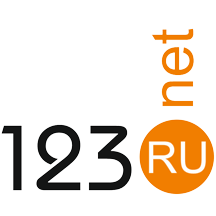The cellular response of lipopolysaccharide-induced inflammation in keratoconus human corneal fibroblasts to RB-PDT: Insights into cytokines, chemokines and related signaling pathways
by Ning Chai, Tanja Stachon, Sabrina Häcker, Tim Berger, Zhen Li, Maryam Amini, Shweta Suiwal, Berthold Seitz, Achim Langenbucher, Nóra Szentmáry
PurposeRose Bengal Photodynamic Therapy (RB-PDT) offers dual therapeutic benefits by enhancing corneal stiffness and providing antibacterial activity, presenting significant potential for patients with keratoconus complicated by keratitis. Our purpose was to assess the effect of rose bengal photodynamic therapy (RB-PDT) on the expression of pro-inflammatory cytokines and chemokines, as well as on extracellular matrix (ECM)-related molecules, in lipopolysaccharide (LPS)-induced inflammation of keratoconus human corneal fibroblasts (KC-HCFs). Additionally, the involvement of the mitogen-activated protein kinase (MAPK) and nuclear factor kappa B (NF-κB) signaling pathways which are downstream of the Toll-like receptor 4 (TLR4) pathway were examined.
MethodsKC-HCFs were stimulated with varying concentrations of LPS (0–10 μg/ml), which was followed by RB-PDT. The expression levels of interleukin-1β (IL-1β), IL-6, IL-8, interferon alpha 2 (IFNA2), IFNB1, intercellular adhesion molecule 1 (ICAM-1), chemokine (C-C motif) ligand 4 (CCL-4), collagen I, collagen V, lysyl oxidase (LOX), transforming growth factor β 1(TGF-β1) were measured using qPCR, ELISA, or western blot. The activation of the NF-κB and MAPK pathways was assessed using qPCR and western blot.
ResultsIn LPS-induced inflammation of KC-HCFs, the expression of IL-6 was further amplified by the treatment with RB-PDT (p = 0.001). However, the activation of the MAPK and NF-κB pathways did not increase following RB-PDT. Additionally, RB-PDT reduced the transcription of collagen I and collagen V (p≤0.03), while the transcription of LOX and TGF-β1 secretion remained unchanged in KC-HCFs exposed to LPS.
ConclusionIn LPS-induced inflammation of KC-HCFs treated with RB-PDT, despite the increased expression of pro-inflammatory cytokines, the activation of the TLR4 signaling pathways is lacking. RB-PDT may have no adverse effects on corneal scar formation of keratoconus corneas in the short term.
